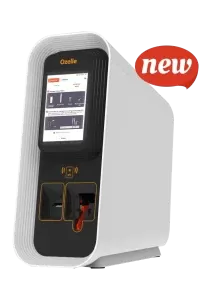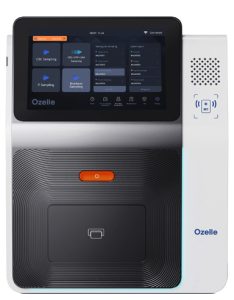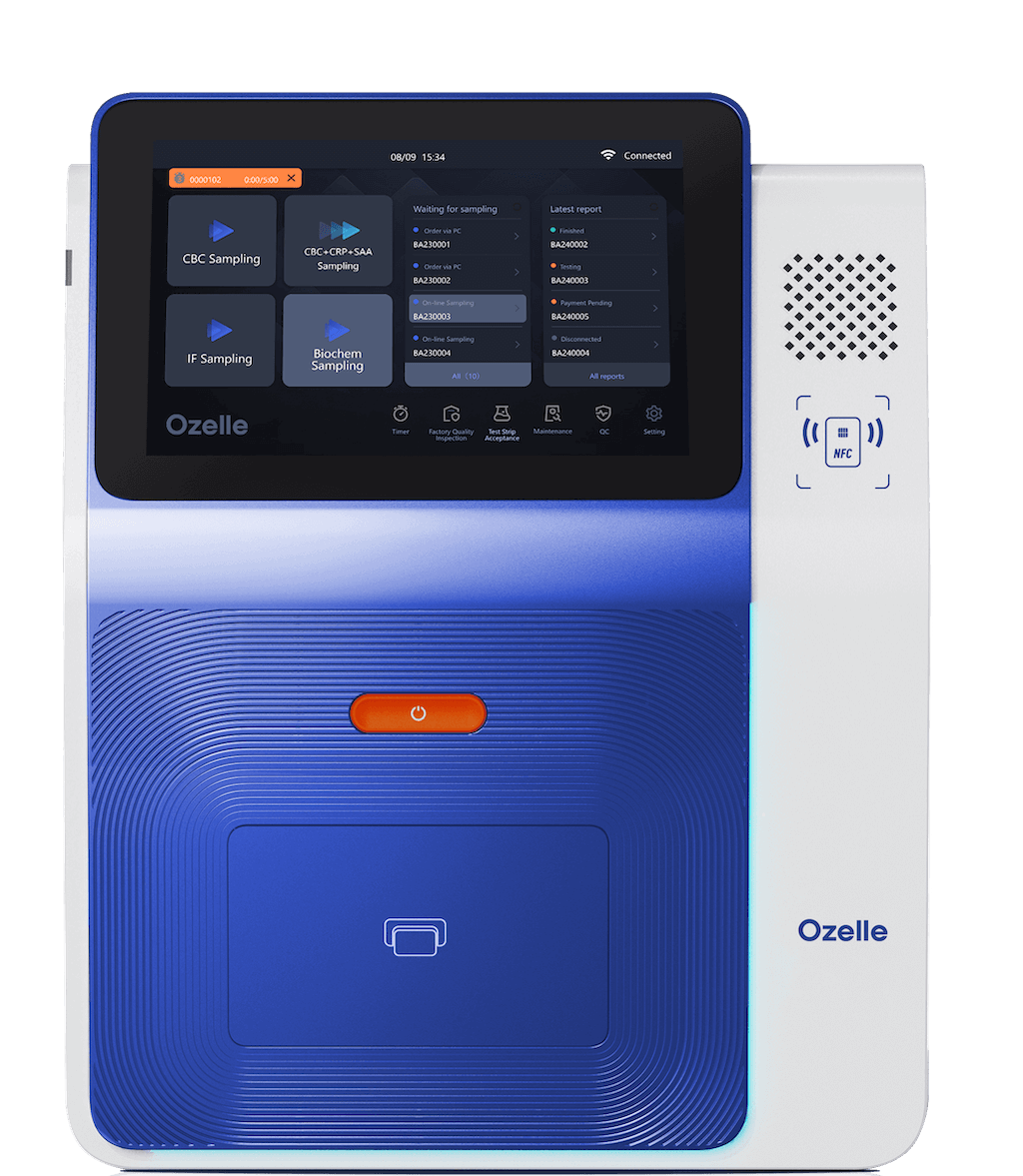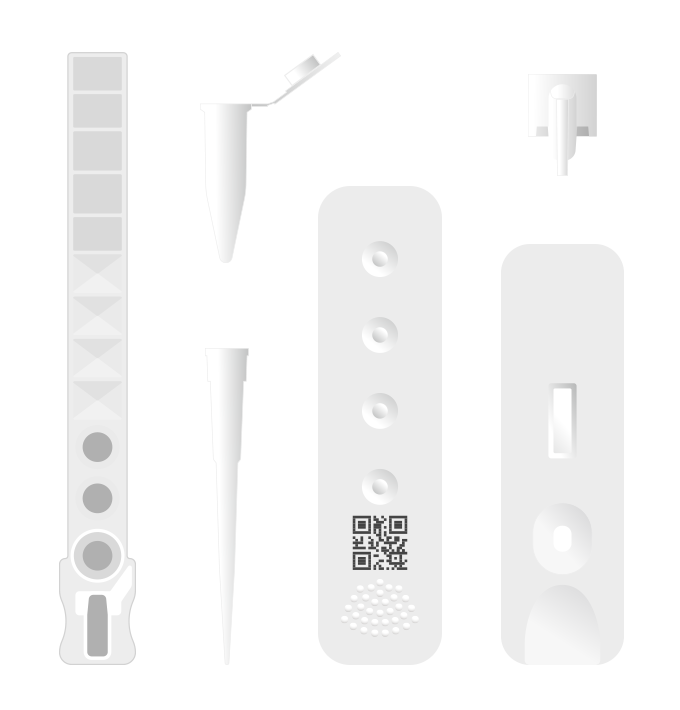Selecting a blood analyzer is a critical investment decision for healthcare facilities. Laboratory managers, clinic directors, and procurement specialists must evaluate not just product models, but the fundamental analytical approach: traditional Complete Blood Count (CBC) methods that provide quantitative data alone, or AI-powered Complete Blood Morphology (CBM) systems that integrate visual cell analysis for superior diagnostic insight. This guide compares Ozelle’s 3-diff and 7-diff hematology analyzers based on verified specifications and clinical capabilities, helping decision-makers understand how advanced morphology analysis translates into better clinical outcomes and operational efficiency.
Understanding Blood Analyzer Classification
3-Diff Analyzers identify three main white blood cell categories: granulocytes, lymphocytes, and mid-range cells, providing sufficient information for routine primary care screening. These analyzers achieve lab-grade linearity with R² values of 0.99 and maintain precision (coefficient of variation) of 3-6% for major parameters, meeting clinical quality standards for basic diagnostic needs.
7-Diff Analyzers distinguish seven distinct cell populations and abnormal cells including immature neutrophils (NST), nuclear-shifted granulocytes (NSG), and reticulocytes (RET), enabling detection of hematologic disorders, severe infections, and bone marrow conditions. These advanced analyzers deliver superior detection accuracy through AI-driven cell morphology imaging—capturing high-resolution cell images for visual analysis—rather than relying on impedance-only methods. They achieve R² linearity values exceeding 0.98 across all parameters and deliver results within 6 minutes, providing the morphological insight required for complex clinical cases traditionally requiring manual microscopy.
Technology: Traditional CBC vs. AI-Powered Complete Blood Morphology (CBM):
Traditional Complete Blood Count (CBC) analyzers deliver quantitative data—cell counts and indices—but cannot assess cell morphology or identify abnormal cellular characteristics. These limitations require manual microscopy for complex cases. Ozelle’s AI-driven Complete Blood Morphology (CBM) integrates quantitative CBC parameters with AI-powered visual cell analysis, enabling automated detection of abnormal cells within 6 minutes, eliminating the need for manual microscopy in most routine cases.
EHBT-75: 7-Diff Specialized Hematology Analyzer
Best For: Academic medical centers, hematology-oncology practices, specialized diagnostic laboratories
Official Specifications:
- Principle: Cell morphology (CBC), photoelectric colorimetry (HGB)
- Parameters: 37 CBC parameters with advanced abnormal detection
- Testing Modules: Hematology only (no multi-functional testing)
- Throughput: 10 samples/hour
- Sample Volume: 30-60 microliters for loading; 30 microliters for testing
- Result Time: 6 minutes for morphological report
- Dimensions: 415 × 203 × 483 mm (compact design)
- Weight: 15 kg
- Calibration: Auto-calibration
- Quality Control: Dry-type QC cards
- Display: 7.0-inch touch screen (1024 × 600 resolution)
- Communication: USB, Ethernet, WiFi, Bluetooth
- Power: AC 100-240V, 50-60Hz
Distinguishing Features:
- Specialized for CBC-focused laboratories
- Single-use cartridges stored at room temperature (12-month shelf life)
- Liquid-based staining technology for enhanced cell visualization
- Advanced morphology image capture with cell counts
- Automated sample processing with minimal operator involvement
Clinical Applications:
- Leukemia and hematologic malignancy screening
- Hemolytic anemia assessment (through RET enumeration)
- Infection severity evaluation (through abnormal cell detection)
- Chemotherapy monitoring
- Bone marrow disorder investigation
EHBT-50: 7-Diff Multi-Functional Analyzer
Best For: Hospitals, diagnostic centers, large clinic networks, facilities requiring multiple testing modalities
Official Specifications:
- Principle: Cell morphology (CBC), photoelectric colorimetry (HGB), immunofluorescence assay (IF), dry chemistry (biochemistry)
- Parameters: 37 CBC parameters plus 100+ immunoassay and biochemistry markers
- Testing Modules: All-in-one (hematology + immunoassay + biochemistry + urine + fecal)
- Throughput: 10 samples/hour
- Sample Volume: 30-100 microliters depending on test panel
- Result Time: 6 minutes for morphological CBC report
- Dimensions: 350 × 400 × 450 mm
- Weight: 15 kg
- Calibration: Auto-calibration
- Quality Control: Dry-type QC cards
- Display: 10.1-inch touch screen (800 × 1280 resolution)
- Communication: LIS/HIS, WiFi, Ethernet, USB 2.0, Bluetooth, Type C, SIM port
- Connectivity: Over-the-air (OTA) software updates for new assay panels
- Power: AC 100-240V, 50-60Hz
7-Diff CBC Capabilities (37 Parameters):
- Standard differential: NEU, LYM, MON, EOS, BAS
- Abnormal cells: NST, NSG, NSH, NLR, PLR, ALY, PAg, RET
- Additional: WBC, RBC, HGB, HCT, MCV, MCH, MCHC, RDW-SD, RDW-CV, PLT, MPV, PDW, PCT, P-LCR, P-LCC
Multi-Functional Testing :
- Immunoassay: Cardiac (troponin, BNP), inflammation (CRP, SAA), hormone markers, infectious disease serology
- Biochemistry: Glucose, lipids, liver function, kidney function
- Urine: Complete urinalysis with microscopy
- Fecal: Analysis and parasite detection
Key Advantages:
- Consolidates 4-5 separate analyzers into one device
- Reduces capital equipment costs and space requirements
- Lab-grade linearity specifications (R² >0.98 for all parameters)
- Auto-calibration (no operator intervention)
- Individual test kits eliminate maintenance
- OTA updates enable future assay expansion
Clinical Value:
Identifies immature and abnormal cell populations enabling earlier detection of leukemia, severe infections, hemolytic anemias, and bone marrow disorders.
EHBT-25: 3-Diff Entry-Level Analyzer
Best For: Primary care clinics, urgent care centers, pharmacies, small diagnostic facilities
Official Specifications:
- Principle: Cell morphology, photoelectric colorimetry
- Parameters: 21 (WBC, GRAN, LYMPH, MID, HGB, RBC, HCT, MCV, MCH, MCHC, RDW-SD, RDW-CV, PLT, PCT, MPV, P-LCC, P-LCR, PDW plus 3 histograms)
- Throughput: 12 samples/hour
- Sample Volume: 40 microliters (capillary or venous whole blood)
- Result Time: ~60 seconds per sample
- Dimensions: 293 × 357 × 400 mm
- Weight: 8.1 kg
- Calibration: Manual
- Quality Control: Dry-type QC cards
- Display: 10.1-inch touch screen (1280 × 800 resolution)
- Communication: LIS, USB 2.0, LAN
- Power: AC 100-240V, 50-60Hz
Key Features:
- Individual test kits (no pipeline design)—zero maintenance required
- Room temperature storage for reagents
- Capillary blood collection from fingerstick
- Lab-grade linearity (R² >0.99 for WBC, RBC, platelet counts)
- NPT certified for pharmacy use
- Economical and maintenance-free operation
Clinical Value:
AI-enhanced 3-diff capability provides superior abnormal cell detection compared to impedance-only analyzers, suitable for most primary care patients.
Ozelle Blood Analyzer Comparison Table
| Feature | EHBT-25 | EHBT-50 | EHBT-75 |
| Differential Capability | 3-diff | 7-diff + abnormal | 7-diff + abnormal |
| Throughput (samples/hour) | 12 | 10 | 10 |
| Sample Volume | 40 µL | 30-100 µL | 30 µL |
| CBC Parameters | 21 | 37 | 37 |
| Multi-Functional | CBC only | Hematology + Immunoassay + Biochemistry + Urine + Fecal | CBC only |
| Abnormal Cell Detection | Basic | Advanced | Advanced |
| Result Time | 60 seconds | 6 minutes | 6 minutes |
| Maintenance | Zero | Zero | Zero |
| Calibration | Manual | Automatic | Automatic |
| Result Time (7-Diff Report) | N/A | 6 min | 6 min |
| Auto-Calibration | Manual | Yes | Yes |
| Regulatory Status | CE, FDA | CE, FDA | CE, FDA |
Blood Analyzer Maintenance and Operational Design
Maintenance-Free Architecture:
All analyzers use individual test kits rather than traditional pipeline designs. Each kit contains:
- Pre-filled diluent
- Staining reagent
- Counting chamber
- Disposable collection capillary
Advantages:
- No daily priming or cleaning procedures
- No cross-contamination between samples
- No blockages or clogging
- Room temperature storage (cold-chain free)
- Reduced staff training requirements
Quality Control:
All analyzers use dry-type QC cards, eliminating refrigeration requirements and improving logistical efficiency compared to liquid QC materials.
Blood Analyzer Vendor Information
About Ozelle:
- Founded: 2014
- Headquarters: Frankfurt, Germany
- Global Presence: 50,000+ units installed across 100+ countries
- Staff: 500+ employees with 60+ dedicated R&D personnel
- Certifications: CE marking, FDA clearance, ISO 13485:2016, ISO 15189
- Patents: 500+ patents in diagnostic technology
- Technology Recognition: World Artificial Intelligence Conference (WAIC) 2022 award for AI algorithm
Blood Analyzer of Clinical Decision Framework
Select EHBT-25 When:
- Patient population primarily requires routine screening
- Facility operates 500-2,000 tests annually
- Budget constraints favor economical solutions
- Space is limited
- Maintenance overhead must be minimized
Select EHBT-50 When:
- Multi-functional testing (hematology, immunoassay, biochemistry) is required
- Space optimization is important (consolidating multiple devices)
- Hospital or diagnostic laboratory setting
- OTA update capability for future assay expansion is valued
Select EHBT-75 When:
- Specialized hematology focus with abnormal cell detection priority
- Complex case management requiring 7-diff capability
- Image-based morphology documentation is critical
- Compact footprint is required
Key Differentiation: AI Cell Morphology vs. Traditional Methods
Ozelle’s AI-enhanced analyzers provide verifiable advantages:
- Linearity Accuracy: Lab-grade specifications with R² values >0.98-0.99 across measurement ranges
- Abnormal Detection: Visual cell image capture enables morphology analysis traditional impedance analyzers cannot provide
- Quality Assurance: Cell images retained with results for quality verification and medicolegal documentation
- Operator Consistency: AI-based recognition eliminates operator-dependent variability
Conclusion
Blood analyzer selection requires matching analytical capability with clinical requirements and operational constraints. Ozelle’s product portfolio addresses diverse market segments:
- EHBT-25: Primary care and point-of-care settings prioritizing economy and simplicity
- EHBT-50: Hospital and diagnostic laboratories benefiting from multi-functional consolidation
- EHBT-75: Specialized hematology practices requiring advanced abnormal cell detection
- EHVT-50: Veterinary clinics requiring species-specific diagnostics
All analyzers share core advantages: AI-powered cell morphology analysis, individual test kit design (zero maintenance), dry-type QC cards, and proven clinical validation through 50,000+ global installations.
For pricing, service agreements, and facility-specific recommendations, contact Ozelle directly for consultation.





